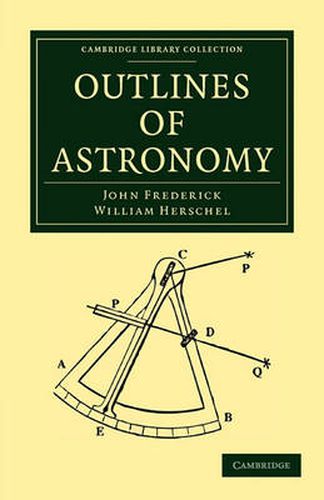Readings Newsletter
Become a Readings Member to make your shopping experience even easier.
Sign in or sign up for free!
You’re not far away from qualifying for FREE standard shipping within Australia
You’ve qualified for FREE standard shipping within Australia
The cart is loading…






Sir John Frederick William Herschel (1792-1871) - astronomer, mathematician, chemist - was one of the most important English scientists of the nineteenth century. Son of the famous astronomer William Herschel and nephew of Caroline, he was persuaded by his father to pursue the astronomical investigations William could no longer undertake; John’s subsequent career resulted in a knighthood and a lifetime of accolades. Outlines of Astronomy (1849), an updated and expanded version of his 1833 Treatise on Astronomy, went through eleven editions in two decades and was translated into several languages. Outlines examines terrestrial and celestial phenomena, providing the reader with a wide range of knowledge about the physical world as a whole. The work is an important textbook, the object of which ‘is not to convince or refute opponents, nor to inquire … for principles of which we are all the time in full possession - but simply to teach what is known’.
$9.00 standard shipping within Australia
FREE standard shipping within Australia for orders over $100.00
Express & International shipping calculated at checkout
Sir John Frederick William Herschel (1792-1871) - astronomer, mathematician, chemist - was one of the most important English scientists of the nineteenth century. Son of the famous astronomer William Herschel and nephew of Caroline, he was persuaded by his father to pursue the astronomical investigations William could no longer undertake; John’s subsequent career resulted in a knighthood and a lifetime of accolades. Outlines of Astronomy (1849), an updated and expanded version of his 1833 Treatise on Astronomy, went through eleven editions in two decades and was translated into several languages. Outlines examines terrestrial and celestial phenomena, providing the reader with a wide range of knowledge about the physical world as a whole. The work is an important textbook, the object of which ‘is not to convince or refute opponents, nor to inquire … for principles of which we are all the time in full possession - but simply to teach what is known’.